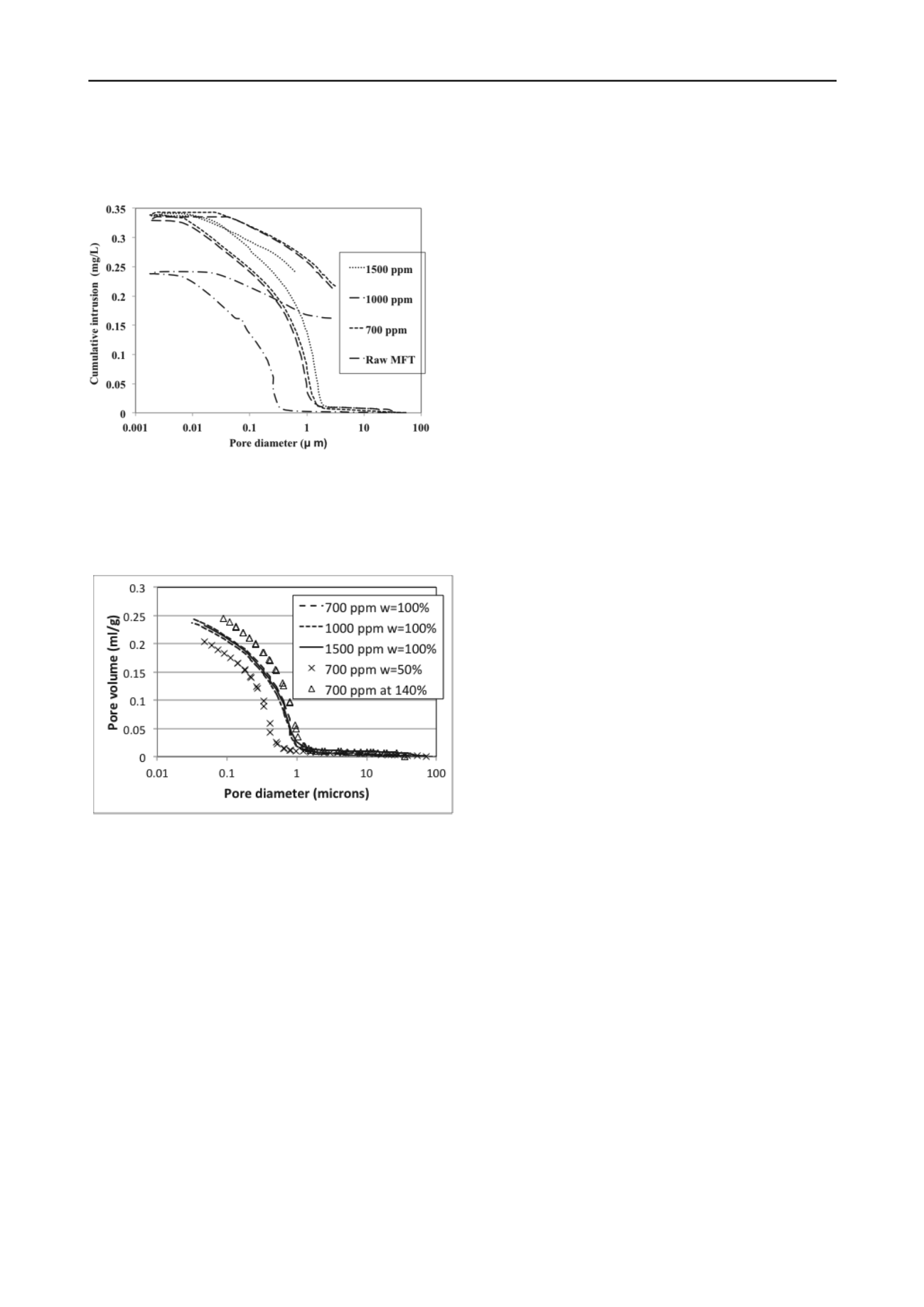
1088
Proceedings of the 18
th
International Conference on Soil Mechanics and Geotechnical Engineering, Paris 2013
After desiccation to 50% water content, the amended tailings
still show a greater porosity in the larger pores, compared to the
raw MFT at 140% in Figure 6.
4 ACKNOWLEDGEMENTS
The authors are greatly thankful to Civil & Environmental
Engineering Department, Carleton University, Ottawa, Canada
and Shell Canada for the financial support to complete this
study.
5 REFERENCES
ASTM 4404 – 10: Standard test methods for determination of pore
volume pore volume distribution of soil and rock by mercury
intrusion porosimetry
Jeeravipoolvarn S. (2005); Compression behaviour of thixotropic oil
sands tailings, MASc thesis in Geotechnical Engineering;
Department of Civil and Environmental Engineering: University of
Alberta, Canada
Matthews, J., Dhadli, N., House, P. Simms, P. (2011) Field trials of
thin-lift deposition of amended mature fine tailings at the Muskeg
RiveMine in Northern�Alberta. Proceedings of the 14th
International Seminar on Paste and Thickened tailings, 5–7 April
2011, Perth, Western Australia, pp. 271-280
Figure 6 Mercury intrusion porosimetry test results, showing
cumulative pore-size distributions (intrusion and extrusion
curves) for amended MFT for a water contents of 140% for 700,
1000, 1500 ppm and raw MFT.
Romero, E. and Simms, P. (2008). Microstructure investigation in
unsaturated soils: a review with special attention to contribution of
mercury intrusion porosimetry and environmental scanning electron
microscopy. Geotechnical and. Geological Engineering. 26 (6):
705–727
Sasanian, S. (2011) The behaviour of cement stabilized clays at high
water content. PhD Thesis, The University of Western Ontario
Simms P.H., and Yanful, E.K. (2005) A pore-network model for hydro-
mechanical coupling in unsaturated compacted clayey soils.
Canadian Geotechnical Journal, 42 (2): 499-514.
Simms P. H. and Yanful E. K. (2004) A discussion of the application of
mercury intrusion porosimetry for the investigation of soils
including an evaluation of its use to estimate volume change in
compacted clayey soils. Geotechnique 54(6): 421–426
Wells, S, Revington, A., Omotoso, O. (2011) Mature fine tailings
drying – a technology update. Proceedings of the 14th International
Seminar on Paste and Thickened tailings, 5–7 April 2011, Perth,
Western Australia, pp. 155-166.
Wilson G.W., Fredlund D.G., and Barbour S. L., (1997) The effect of
soil suction on evaporative fluxes from soil surfaces Can. Geotech.
J. 34: 145.155 (1997).
Figure 7 Cumulative pore-size distributions at different degrees
of desiccation
3 SUMMARY CONCLUSIONS
Microstructure of polymer amended MFT is studied using MIP
and SEM techniques. Both techniques show that the pore-size
distributions of the different treatments (polymer doses of 700,
1000, and 1500 ppm) converge with increasing desiccation.
This correlates with the very similar water-retention curves of
the different treatments, though not with the slightly higher
shrinkage limit (58% to 50%) of the 1500 ppm sample. Based
on this analyses, it appears that the desiccation behaviour,
beyond the initial water release during settling, is relatively
insensitive to the range of polymer applied in this study.
Ongoing work is examining the consolidation behaviour of
MFT treated with different levels of polymer subsequent to
different degrees of desiccation. This information is hoped to
assist in optimization of this type of technology for tailings
operations in the oil sands.


